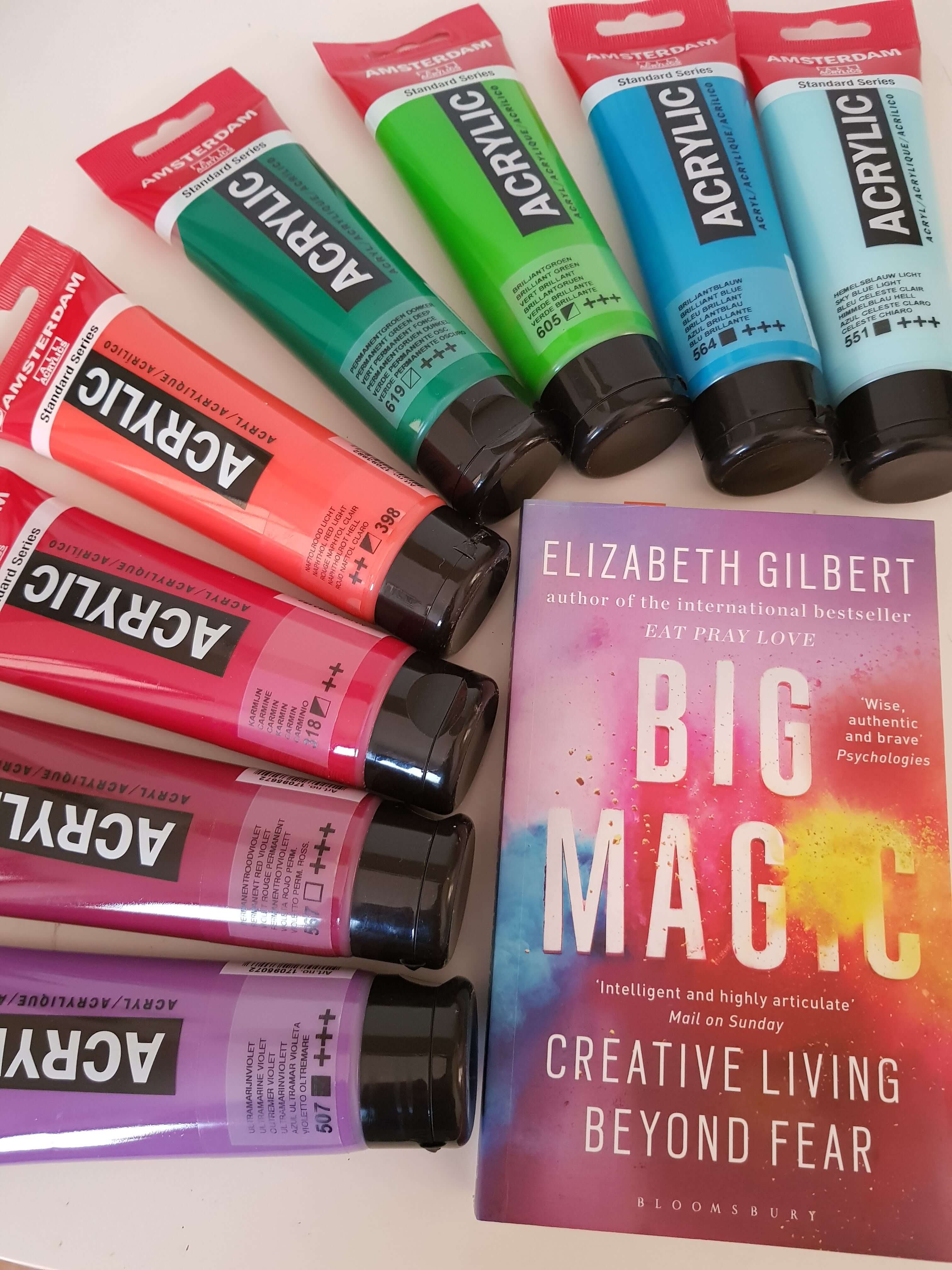
Elizabeth Gilbert: creating Big Magic and releasing our fears
Book Review: Big Magic – Creative Living Beyond Fear by Elizabeth Gilbert
“Do whatever brings you to life. Follow your own fascinations, obsessions and compulsions. Trust them. Create whatever causes a revolution in your heart.”
(from the book).
After reading “Eat, Pray, Love”, listening to the successful talk of Elizabeth Gilbert on TED, and hearing so much praise about this book, I decided to buy it. I’m glad that I did. This is a kind of book that you want to re-read again and again and each time I’m sure that I’ll learn new insights and tools. Elizabeth Gilbert takes her creativity seriously but lightly. She gives the motivation just to begin, give yourself a chance and not to take yourself too seriously. No matter what form of art, of creativity we are talking about.
“Pure creativity is magnificent expressly because it is the opposite of everything else in life that’s essential or inescapable (food, shelter, medicine, rule of law, social order, community and familial responsibility, sickness, loss, death, taxes, etc.). Pure creativity is something better than a necessity; it’s a gift. It’s the frosting. Our creativity is a wild and unexpected bonus from the universe. It’s as if all our gods and angels gathered together and said, “It’s tough down there as a human being, we know. Here – have some delights”.
(page 128)
There are so many angles in which Gilbert examines creativity in this book. One of the ideas that resonated with me is that people often think that they have to “get something” out of their creativity. Some people’s desire is to neglect everything else, to leave their jobs and devote everything to their creative endeavor. Many people expect that their art will support them and actually put food on the table. Gilbert explains how dangerous this can be. She describes in detail the pressure that this act puts on one’s creativity, a pressure that can have a counter-effect, destroying our creativity by putting too much stress on it to be “productive” and to “sell”. Instead she encourages us to act freely with the creative muse and power and to allow it to gently find its way into our creations. By letting go of external pressures of performance and doing a “good job” with our art, we provide it with a real chance to develop and to thrive in the ways that it is meant to, ways that are often beyond our understanding.
In the book Gilbert discusses the need to just create; to devote the time for it, to make the space for it and to just begin. We cannot expect inspiration to come knocking on our door if we do not allow the space for it and if we do not pay attention to it. She also talks about the dangers of perfectionism. Striving constantly to create “perfect” art is harmful in many ways. It can cause us to avoid starting to create in the first place, thinking that if we wait for the right time, the right place, the right tools, the right skills acquired, we will be able to produce our most perfect art; yet the right circumstances which are ideal and fully aligned hardly ever come our way, and if we do decide to wait, we will probably waste so much precious time.
“We don’t have time for perfect…perfection is unachievable: It’s a myth and a trap and a hamster wheel that will run you to death. The writer Rebecca Solint puts it well: “So many of us believe in perfection, which ruins everything else, because the perfect is not only the enemy of the good; it’s also the enemy of the realistic, the possible, and the fun”. Perfectionism stops people from completing their work, yes – but even worse, it often stops people from beginning their work. Perfectionists often decide in advance that the end product is never going to be satisfactory, so they don’t even bother trying to be creative in the first place”.
(page 166-167)
When thinking of the ideal artist or an artist that we are familiar with – whether actual real-life artists or artists in movies or novels – we often think of the suffering artist, the artist who gives all his time, energy and life to his art. Gilbert shatters this myth. She claims that creating can be done out of joy, content and happiness, and we do not have to adopt the character of the suffering, distressed artist. This is a refreshing perspective and in many ways life-giving, allowing artists of all kinds to let go a bit and just enjoy making art. Elizabeth Gilbert encourages us to have fun with our creativity, to find paths that ignite our curiosity. I think that this book can be valuable for any kind of artist in all fields, no matter the level of their craft and expertise.
“We all need something that helps us forget ourselves for a while – to momentarily forget our age, our gender, our socioeconomic background, our duties, our failures, and all that we have lost and screwed up. We need something that takes us so far out of ourselves that we forget to eat, forget to pee, forget to mow the lawn, forget to resent our enemies, forget to brood over our insecurities, Prayer can do that for us, community service can do it, sex can do it, exercise can do it, and substance abuse can most certainly do it (albeit with god-awful consequences) – but creative living can do it, too. Perhaps creativity’s greatest mercy is this: By completely absorbing our attention for a short and magical spell, it can relieve is temporarily from the dreadful burden of being who we are.”
(page 172)






